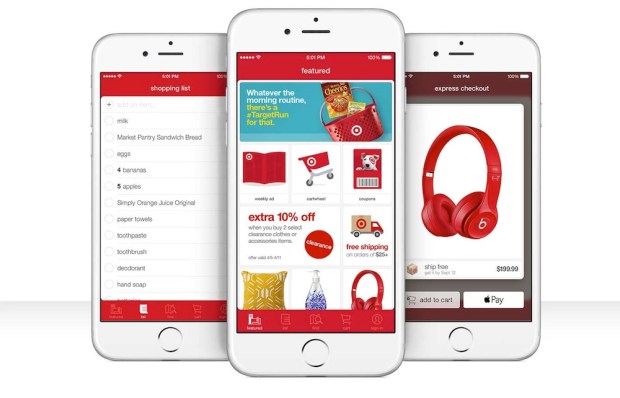For the many retailers racing toward retail’s future, ship-from-store has emerged as a saving grace for a multitude of reasons. If a merchant has a network of stores, often located within an hour or less of their consumer base, why wouldn’t they leverage that advantage when it comes to putting goods into consumers’ hands?
Furthermore, the web has no shortage of articles pitching the wonders of ship-from-store as the solution to a variety of retailer woes. Regional overstock of some goods? A location in Florida with far too many boots, and people in Maine crying out for boots? No problem. Sure, the retailer might take a hit on the shipping cost, but it will likely be far less than what they would face if they’d had to resort to the more familiar classic known as markdowns.
Plus, overall, a well-run ship-from-store strategy can help retailers more efficiently manage supply, which means that they may be able to carry less of it overall, resulting in a significant savings on overhead.
“In addition, growth-oriented retailers can avoid investing capital in additional distribution centers by leveraging existing retail stores and turning them into virtual distribution centers,” notes UPS retail segment marketing director David Sisco.
Ship-from-store, when run well, has a lot of potential — the problem is the “run well” part of that sentence is particularly important. As it turns out, running such a program well isn’t as easy as flipping a switch and adding a buy option to a website. Brick-and-mortar stores are not warehouses, they aren’t designed to run like fulfillment centers and up until now picking, packing and shipping goods has not been an important part of the average retail clerk’s life. Moving stores toward a more hybridized model requires high visibility into inventory, adequate physical plant for storage and a staff that has some idea what they are doing.
And such were the challenges Target faced a little under a year ago when it announced its hard push into ship-from-store retail.
Target first began exploring ship-from-store capability in a limited fashion starting in 2013, but it was August of last year that saw CEO Brian Cornell tell investors that Target planned to nearly triple the number of stores in its stable with the capacity from 140 to 450 with in a year.
That year is almost up. What has Target learned?
BOPIS Is Easier
Ship-from-store since its inception has been part of Target’s larger omnichannel expansion; paired with buy online, pick-up in store (BOPIS) they were the two sides of Target’s “flexible fulfillment” plan coin.
They learned one side of that coin was easier and more efficient to manage than the other, which is why BOPIS received more attention out of the gate in 2013 when it first entered Target’s menu of services for customers.
It has also been a popular program since its inception, rising to 15 percent of Target’s web sales shortly after launch. The use of the program grew 60 percent in 2015 and 50 percent in 2016 so far. It has also turned out to be a highly efficient way to get goods into customers’ hands quickly. Ninety percent of online orders are ready to be put into customers’ hands within two hours.
“It’s given us the capacity to take on more sales and drive customers to stores,” noted senior vice president of supply chain transformation at Target Karl Bracken. “And most often the customer will buy something else.”
Ship-from-store, which has reached all 450 stores, has had some dramatic results — cutting shipping times, reduced out-of-stock items and lowered shipping costs.
“Shipping from a store is faster than from a fulfillment center hundreds of miles away,” Bracken said.
But there were also challenges, particularly in managing inventory. Target quickly realized as they expanded the program that perhaps their tracking systems were not as accurate as they thought.
“The ‘item not found’ rate was higher than projected,” Bracken said. “Some stores had to cancel up to 50 percent of online orders because they couldn’t find a product in the store.”
The other problem was just good old-fashioned physical space, and finding a good way to store all those items ordered online before pickup.
“Another problem surfaced soon after rollout: lack of space to hold online orders. Space was limited behind many stores’ customer service counters, leading some to find another location that wasn’t necessarily coordinated with customer service.”
Plus, there were the personnel issues, as Target has to figure out what (if any) payroll adjustments need to be made for employees whose duties now included more work, fulfillment processing and inventory management.
Fixing The Issues (And The Benefits Of Showing Up A Little Late To The Game)
“Being late to the game helped us avoid mistakes,” Bracken said. “We’re still not perfect today, but we continue to work on it.”
Target started their omnicommerce efforts with BOPIS, and later grew flexible fulfillment to include an expanded run of ship-from-store locations. And this measured approach, Bracken notes, is largely what has helped Target navigate through the more complicated field of ship-from-store capacity.
“We saw that leading with order pickup was the right thing to do because there was less chance of products being out of stock, it was convenient for customers, and there was no shipping charge,” Bracken explained.
And it allowed the retailer to evolve ship-from-store in a way that made sense from an inventory, technology and personnel perspective into a process best described as “order pickup with pack-and-ship attached at the end.”

